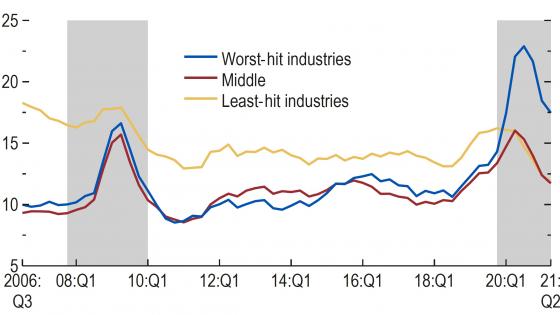DP11788 Debt Overhang, Exchange Rates and the Macroeconomics of Carry Trade
The depreciation of the Hungarian forint in 2009 left Hungarian borrowers with a skyrocketing value of foreign currency debt. The resulting losses worsened debt overhang in debt-ridden firms and eroded bank capital. Although Hungarian banks had partially hedged exchange rate risk by extending FX-denominated loans, the ensuing debt overhang in borrowing firms exposed the banks to elevated exchange rate correlated credit risk in the run-up to an anticipated Euro adoption. This example of carry trade in emerging Europe motivates our analysis of currency mismatch losses in different sectors in the economy, and the macroconsequences of reallocating losses from the corporate to the banking sector ex post. We develop a small open economy New Keynesian DSGE model that links currency depreciation to corporate debt overhang and incorporates an active banking sector with financial frictions. The model, calibrated to the Hungarian economy, shows that after an unanticipated depreciation allocating currency mismatch losses to the banking sector generates a milder recession than if currency mismatch is placed at credit constrained firms. The government can intervene to reduce aggregate losses even further by recapitalizing banks and thus mitigating the effects of currency mismatch losses on credit supply.

